Artificial Breeding Of Endangered Native Pangasius In Haldia
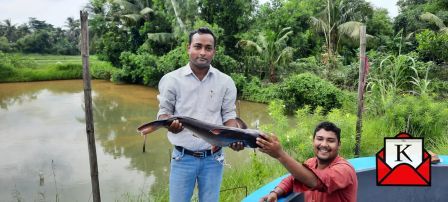
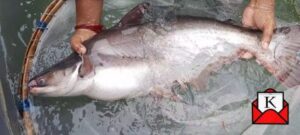
The initiative of the Fisheries Department is to expand the fisheries and encourage the farmers through the cultivation of new fish as well as the production of endangered fish through breeding in Haldia. Subrata Maiti, the owner of a fish hatchery in Chaulkhola village of Haldia, has started artificial breeding of endangered freshwater native Pangasius fish ( Pangasius pangasius).
Suman Kumar Sahu, Haldia Fisheries Extension Officer, Gokul Maji, Matsya Karmadhakshya, and some enthusiastic fish farmers of the area were present at the hatchery, which was set up under the government-aided Blue Revolution project at 8 am on Saturday, July 17.
At the same time, Haldia Fisheries Officer Suman Kumar Sahu arranged a virtual training demonstration for the students of fishery sciences & zoology along with other fish farmers to show the technique of fry production through artificial insemination of endangered pangasius fish online.
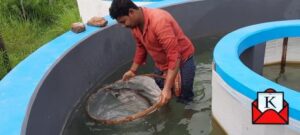
Pangasius fish weighing about five kg was bred on this day.
Reportedly, female fish are larger in size and heavier than male fish of the same age. The female and male fish were kept in the hatchery tank with a shower for 8-10 hours. Later, female and male fish are kept in the house by injecting 1: 1 dose respectively. Water flow is kept through the shower to ensure the required oxygen.
Pangasius fish is found in freshwater and saltwater ponds, especially in rivers and estuaries. They survive by eating animals and small dry insectivorous food and small snails. The fish is very tasty and easy to eat as it has less cut. Reportedly, in 2015, IUCN listed the fish as an endangered species.
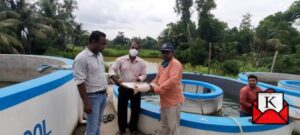
Suman Kumar Sahu, Haldia Fisheries Extension Officer, said that the maturing (4.5-5 kg) female pangasius, a native female, has an egg capacity of 120,000 to 3.5 million and the breeding season of the fish is from July to August. So if the fry is produced at this time, then the fish farmers of the area can easily cultivate with this fry. Artificial insemination is a significant factor in increasing the quality and expansion of endangered native fish.
Unemployed youths can become self-reliant through fish farming or artificial insemination of fish, an initiative we are encouraging from the department. More virtual training and counseling will be provided for the expansion of fish farming during this time of crisis.
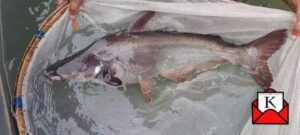
At the initiative of the Block Fisheries Department, fish farming of Pengba, Amur, Deccan Rui, American Pomfret, Milk Fish, etc. has been done in Haldia for the first time in the state. Along with this, fish breeding technology services are being expanded through the introduction of fish breeding. The Haldia Fisheries Officer is currently providing virtual training and consultation which is further encouraging fish farmers. College and university students are also learning Haldia’s modern fishing methods.
